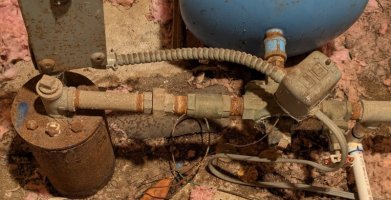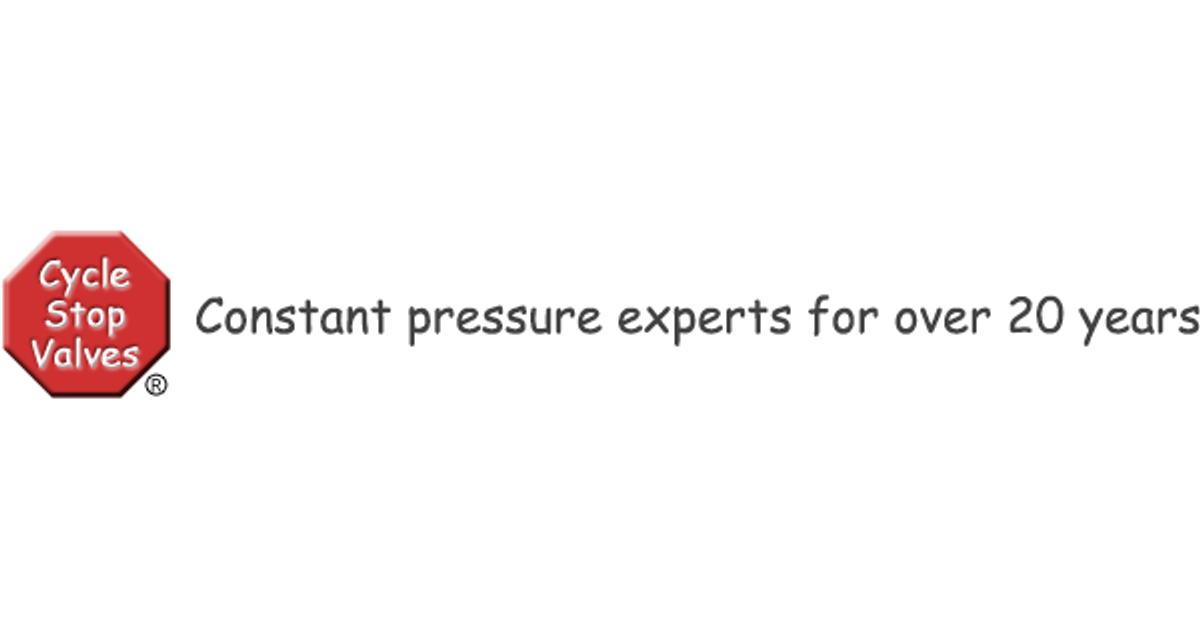UPDATE I went out there today and installed pressure gauges before and after the valves and now I have a better idea what's going on.
Valveman, you asked what is on the red tag? The red tag says: No. 7F8 P.R.V. Model 200-1. On the body casting is "Jacuzzi Bros". Google knows nothing of these numbers but interestingly, there's an identical valve for sale on eBay. Here is a photo, and it's just the same as what I have on this system.

The small port is for the pressure switch and the large bottom port (as pictured) goes to the pressure tank. I see the strainer cap but I'm afraid to loosen it because if something breaks, no water for my daughter until I get it handled somehow. After I installed the gauges and ran the pump I am getting 80-90 psi from the pump depending on demand and 50-54 psi to the house, depending on demand. As soon as I shut off demand, the outlet pressure jumps to 60-62 and after several seconds the pressure switch turns off the pump and its gauge immediately drops to 60 as well, suggesting to me that this likely is a CSV and that there is a small open path through it to relieve the pressure on the pump side when it stops . When I again open a spigot in the house, the outlet pressure gauge slowly falls to near 25 psi before the pump comes on again when it jumps back to 50. I'm thinking the orifice in the pressure switch (40/60) is clogged, explaining the very slow response to rising and falling pressure. I'm just going to replace that crusty old switch.
I tried also today to check the pressure tank and I don't know exactly what's going on there. With all pressure out of the system, I depressed the Schrader valve and there was no pressure. With the system running again, I again pressed the valve and still there was no pressure! I haven't tried yet adding air to the tank to see if I can gain any insight. I'll do that on Monday and replace the pressure switch and see what I've got then.
Rob


